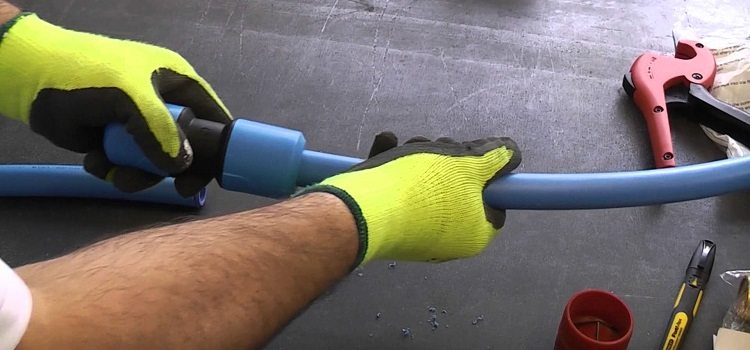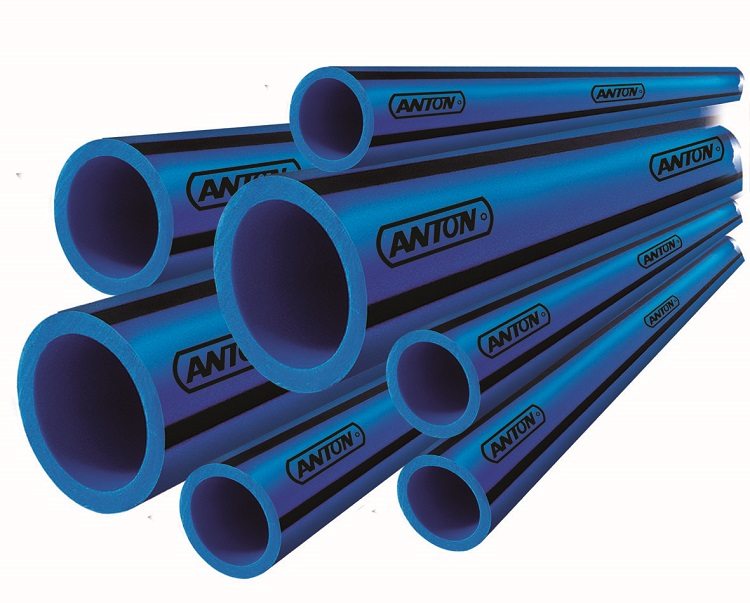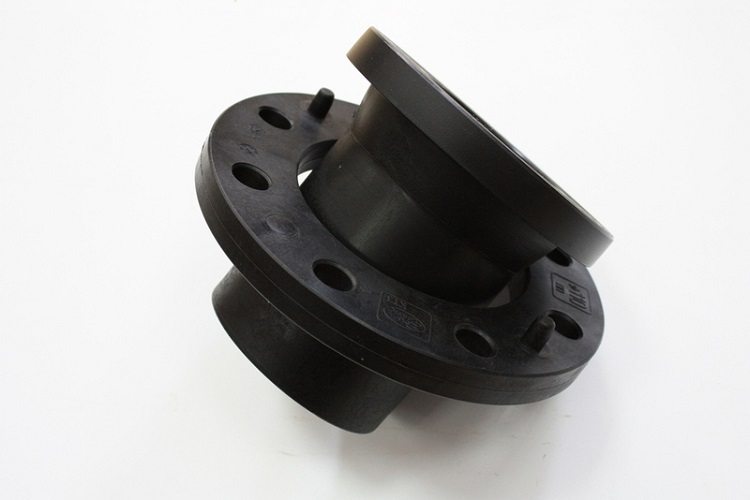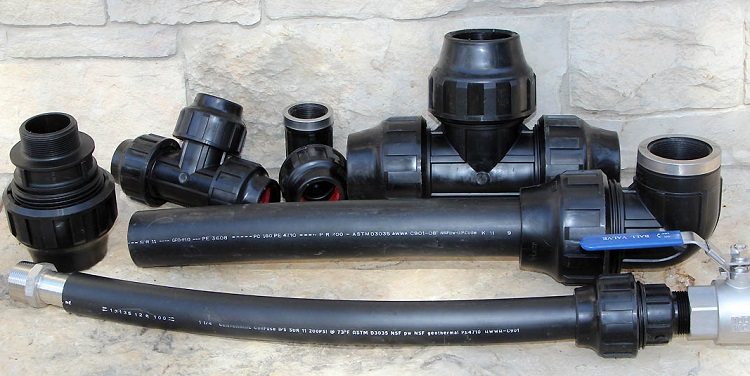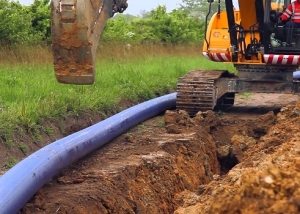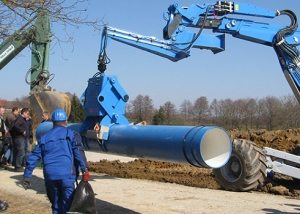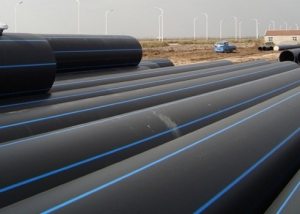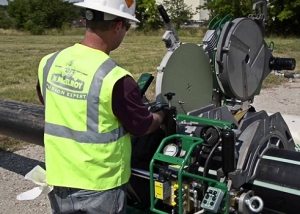Polyethylene pipes are increasingly used in the household for the installation of plumbing, sewer and ground communications. They have several advantages: HDPE pipes are very easy to operate, and also have a low cost and durability. To install them in the apartment, it is not necessary to use the services of a master. Quite possible and do-it-yourself installation of polyethylene pipes.
Content
Pipes made of polyethylene. Main characteristics
Before starting repair work, it is necessary to decide on the type of pipe. You should focus on the purpose of the pipeline. Two types of pipes made of polyethylene are available:
- High pressure polyethylene pipes (LDPE). The higher the pressure at which polyethylene is produced, the lower the density of the material. LDPE pipes should not be chosen for the installation of pressurized water pipes.
- Polyethylene pipes of low pressure (PND). This variety, by contrast, is great for pressure communications. It is widely used even for the installation of trunk pipelines.
HDPE pipes have a strength similar to metal structures, but at the same time, polyethylene is completely not subject to corrosion and chemicals. It is worth remembering that low-pressure polyethylene pipes lose their density at temperatures above 80 ° C. This makes them unsuitable for piping for hot water.
Varieties of fittings for polyethylene pipes
For the stable operation of the polyethylene pipe, it is important to choose the right connecting parts - fittings. There are several types fittingsdiffering in installation method:
- electric welding fittings. The design of such fittings includes a special heating element. This ensures the melting of polyethylene in the process of electric welding, as a result of which a sufficiently dense uniform pipe joint is obtained;
- compression (crimp) fittings. This type of fittings can be used to connect pipes with a diameter of 16 mm to 100 mm. Crimp fittings are sold fully equipped and ready for installation, so they are great for inexperienced craftsmen;
- fittings for butt welding of pipes. With this installation method, spigot fittings that are not equipped with an electric heating coil are used. Only the outer end of the pipe undergoes melting to a viscous state, and the connection occurs under pressure.
If it is necessary to connect a steel water supply system or control valves and HDPE pipes, installation is carried out using flanges.
This type of connection has two main parts: a steel flange and a polyethylene sleeve for the flange.
Helpful advice! For the installation of polyethylene pipes of various diameters, reducing fittings (adapters) are used. They are also indispensable when connecting the pipeline to meters and water distribution equipment.
In addition to the main connecting fittings other designs are also used: tees, splitters.The need to purchase these types of fittings is determined by an individual plan for the future pipeline. Before starting work, it is worth making sure that there are more connecting elements available than was indicated in the plan. For better docking quality, it is recommended to purchase fittings of the same brand as HDPE pipes.
Installation methods for polyethylene pipes
Water connections using HDPE pipes fall into two categories:
- non-separable, without the possibility of re-disassembly. Joins are implied by the welding method (using electric welding fittings);
- collapsible, with the possibility of further adjustment of the connection. For installation works of this type, steel flanges are used. Compression fittings also provide a collapsible joint.
Installation methods can be combined with each other in one communication. In sections of the water supply that require special strengthening, non-separable connections may be involved. To repair a non-separable joint obtained, for example, by diffuse welding, it is necessary to use a soldering iron again to restore tightness.
Installation of the pipeline at home in most cases is carried out in several ways.
Installation with compressor fittings. For the installation of a water pipe using a compressor fitting, the presence of special plumbing tools is not necessary. A strong connection is obtained even with a simple wrench. A nut removed from the fitting is put on one end (previously a 45 ° bevel is made on the pipe with a sharp knife). To facilitate the insertion of the end of the pipe into the fitting, you can lubricate it with building grease or soap foam. After the pipes are placed in the fitting to the desired length, the cap-nut is tightened. This can be done manually, by applying physical effort, and with a wrench. When using a wrench, it is important not to overtighten the nut, as this can ruin the tightness of the connection.
Welding. Joining pipes by butt welding takes place in several stages. The first step is the fusion of the two ends of the pipe. Next, a heating cycle takes effect, during which the material of the parts to be welded receives the necessary heat from the heating element. Pressure should not be applied at this stage. After that, the heating element is removed from the welding area, and the contact surfaces are connected so quickly that the material does not have time to harden. Welding also occurs as quickly as possible and under pressure. The melting point of PND is 270 ° C. A correctly performed welding procedure gives a homogeneous connection (80-90% of the strength of the monolith). Joint precipitation occurs after complete cooling. Cooling should take place under natural conditions; cooling the joint by force is highly not recommended.
Helpful advice! It is best to make any type of installation of the PND pipe in conditions when the ambient temperature is not lower than + 5C. At a lower temperature, polyethylene begins to lose its plastic properties, which leads to poor-quality connection of elements.
It is better to postpone work with such pipes outdoors in the cold season until warming.
HDPE pipes: installation features
Particular attention before the start of installation work is given to protecting the pipeline. It is better to lay a polyethylene water pipe under a concrete base (a cement screed is also suitable). Concrete copes with the protective function perfectly, it protects the polyethylene from hypothermia and overheating, which negatively affect the integrity of the material structure.
After carrying out the necessary measurements, you can start dividing the pipe into segments of the desired length. The pipe cutter tool allows you to cut the pipe as evenly as possible.When using other devices, burrs may form on the pipe section, which must be carefully cleaned with sandpaper. For convenience, marks are indicated on the pipe indicating the depth of fit of the fitting. If bends of the pipe are present in the plan, it is recommended to use a pipe bender.
When installing cold water supply, it is advisable to take care of pipe insulation. Otherwise, condensation will form on the pipe, which often causes mold and mildew in the room.
Important! The distance of the PND pipe from the wall should not be less than 2 cm.
Installation of HDPE pipes does not require special technical skills, but can only be done subject to the above rules. You should not start work on your own, not making sure that at least theoretical knowledge of installation is sufficient. It is best to make a few test connections in time to eliminate the presence of errors in the design.
